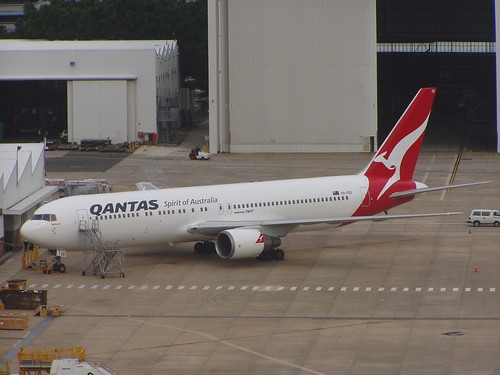I've been wanting to write about this particular topic for some time now. Ironically enough, I now have the perfect opportunity to get my thoughts on paper. I find myself, as I type, sitting at Gate 33 at Logan Airport waiting for my 6:40pm flight to depart to JFK. My jetBlue E190 is here, fueled, loaded, and the crew is ready and raring to go. So why, you ask am I sitting here at 8:37pm twiddling my thumbs? Thunderstorms have forced a ground stop at JFK, and the entire New York City area leaving the beautiful skies over Logan devoid of flights heading to the Big Apple.
Salon.com writer and commercial pilot Patrick Smith, a friend of this blog, hit the nail on the head:
The situation at JFK has reached a breaking point, and it is symptomatic of a nationwide crisis.
I agree with Smith's assessment that regional jets and larger aircraft compete for a finite amount of space both on the taxiways and the sky, however, regional jets have succeeded in opening new markets and enabling better point-to-point connectivity that avoids intermediate connecting airports. The problem is in part schedules, but largely, as I see it an obscenely broken air traffic control system is slowing this country down. If you can remember all the way back to the Summer of 2001 flight delays were snarling America, CNN even did a big special on it. Six years later, it appears nothing has improved. 2006 was the worst year for flight delays in American history, and 2007 is expected to top that.
Advances in avionics technology are ready to fix this problem, the technology to modernize the system on the ground exists too. The air traffic control system as it currently stands is running on 1950s technology. A system that is great if you're flying a 707. Lousy if you're in something a little bit newer. The system as it operates now, relies upon VORs, NDBs and jetways in an entirely ground based system.
Popular Mechanics diagnosed the problem perfectly.
With today's radar, it can take up to 36 seconds to get an accurate read on a plane's position — a long time for an aircraft flying 500 mph. So safety buffers err on the conservative side: The minimum distance between planes is 5 miles horizontally and about 3 miles on landing and approach. The result is inefficient use of airports and airspace.
New aircraft are more than capable of transitioning to a GPS based system. Space based navigation will enable more direct routing reducing flight delays, not to mention improving the bottom line and significant fuel savings. Alaska Airlines has been testing this new system, called NextGen, on its 737 and MD-80 fleet with extraordinary success, saving more than 1000 flights from cancellation last year.
The system is set to be implemented by 2025. However here's the problem:
"The current system cannot handle the projected traffic demands expected by 2015," Robert Sturgell, the FAA's deputy administrator, told the Senate Committee on Commerce, Science and Transportation in March 2007. "Absent modernization, the consequences will be a total system collapse."











































